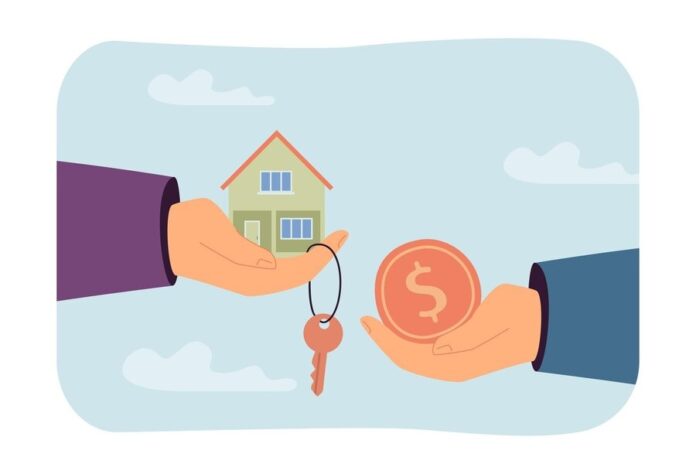Selling a house might sound like a straight-forward transaction — find a buyer, sign the paperwork, and move on. But the financial reality behind that “For Sale” sign is more complex than most homeowners expect.
From hidden fees to shifting market dynamics, it’s not just about getting the best offer — it’s about knowing what you’ll really walk away with.
Key Highlights
- Selling a home includes more than agent commissions — fees stack up quickly.
- 2025 shows a trend toward cost-conscious selling methods.
- Flat-fee services are cutting through traditional pricing barriers.
- Premium listings now influence selling speed and final sale price.
- Location and market demand heavily affect seller profits.
- New tech tools are reshaping the buyer’s journey and seller exposure.

Breaking Down the Real Costs
Every home sale includes several layers of costs, many of which sellers don’t fully anticipate.
The biggest cut typically goes to real estate agent commissions — usually around 5–6% of the final sale price. But that’s only the beginning.
Sellers must also cover:
- Closing costs (1–3%)
- Staging and photography expenses
- Repair costs or pre-sale upgrades
- Transfer taxes and recording fees
- Seller concessions (if negotiated)
On a $400,000 home, the commission alone could cost up to $24,000. Add staging, closing fees, and repairs, and total expenses could push past $30,000. That’s not pocket change — and it shrinks your actual profit.
The Push Toward Smarter Selling Options
As markets evolve, homeowners want alternatives. They want to cut fees, but not quality. That’s where AZ Flat Fee enters the conversation. Sellers who choose flat-fee listing services are shifting away from outdated commission models.
AZ Flat Fee offers priority placement in local search results, which means more visibility without paying traditional agent commissions. Sellers also keep control over buyer inquiries — no middlemen intercepting leads.
Their upgraded Showcase Listings come with immersive content like 3D tours, drone footage, and high-resolution photos, helping homes stand out and engage serious buyers.
It’s not just about saving money — it’s about leveraging tools that lead to faster sales and better-qualified offers.

How Staging, Photos, and Repairs Eat at Profit
Many sellers rush into listing without considering the upfront costs of presentation. Homes that aren’t staged, professionally photographed, or upgraded to meet buyer expectations tend to sit longer — and often sell for less.
Common pre-sale investments:
- Staging: $1,000 to $2,500+
- Deep cleaning and landscaping: $300 to $1,000
- Professional photography: $200 to $500
- Minor repairs and paint touch-ups: $1,000 to $5,000
These aren’t optional if you’re trying to stay competitive. Buyers expect move-in ready. If your property doesn’t reflect that, they’ll skip to the next listing.
And each day your house sits on the market, the likelihood of price reductions increases.
Market Trends in 2025 — What’s Driving Costs Now?
2025 is pushing home sellers into a tighter corner. Mortgage rates remain unpredictable. Buyer demand is cooling in some regions and heating up in others. The competition between traditional agents and modern platforms is getting sharper.
Three major cost influencers:
- Interest rates: Higher rates make buyers more selective and negotiations harder.
- Tech-driven platforms: They shift pricing structures and reduce traditional agent control.
- Location-based demand: Urban sellers face different pressures than rural ones.
Homeowners in high-growth areas may find buyers easier, but even then, smart listing strategies matter more than ever.
What Sellers Miss: Concessions and Buyer Incentives
Too many sellers only calculate their cost based on what they’ll pay out-of-pocket. But concessions — like covering part of the buyer’s closing costs or including allowances for repairs — silently drain profits.
Here’s what often slips through the cracks:
- $5,000–$10,000 in negotiated buyer credits
- Price cuts after inspection results
- Costs tied to appraisals or delayed closing dates
These are harder to anticipate, but they’re common. Even strong offers may come with hidden requests. The more competitive your listing looks, the fewer of those requests you’ll need to accept.
The Impact of Online Presentation
More than 95% of buyers now start their home search online. That means your digital listing is your first — and often only — chance to get their attention.
A strong listing today includes:
- Drone footage
- 3D virtual walkthroughs
- Floor plans with measurements
- Professionally edited, high-resolution images
This content keeps people engaged longer and helps them visualize living in the space. If you can’t afford a professional, some services include these premium tools without charging luxury prices.
When Timing Works For or Against You
Another cost factor: timing. Listing during peak season often brings more competition but also more motivated buyers. Delisting and relisting can signal desperation, which hurts your final offer.
Best months to sell in 2025 vary by region, but in most U.S. markets:
- Spring sees the highest volume of serious buyers.
- Late summer or fall can offer less competition but slower traffic.
- Winter remains unpredictable and often favors buyers.
Listing at the right time means fewer days on market, which translates into fewer price cuts and better terms.
Legal and Regulatory Costs You Can’t Ignore
Even after the sale price is agreed, legal obligations still bring expenses. You may need to:
- Pay for a real estate attorney in some states
- Order surveys, HOA documents, or title corrections
- Cover escrow fees, title insurance, and tax proration
It all adds up. Sellers often underestimate these “back-end” costs because they only appear at closing. But they’re not optional, and skipping them could put the deal at risk.

Where Seller Costs Are Headed
More sellers now reject old-school 6% commissions. As buyers grow more tech-savvy, sellers must match that level of professionalism — but do it with fewer expenses.
Expect the following in the near future:
- Flat-fee platforms will dominate listing services.
- Premium listing features will become standard, not optional.
- Seller education will focus on transparency, not just transactions.
The smart seller in 2025 doesn’t just aim to sell — they aim to retain as much equity as possible. And that means reevaluating how they list, who they list with, and what tools they use to attract serious buyers.
Conclusion: You Can Keep More of What You Earn
Selling your house in 2025 takes more than finding a buyer. It takes smart budgeting, strong presentation, and a better listing strategy. Traditional agent models still work, but they’re no longer the only option — or even the most effective one.
If you’re not reviewing flat-fee services, you’re likely spending more than you need to. Profit doesn’t come from the sale price alone. It comes from managing every dollar that goes out during the process.
Don’t just aim for a fast sale. Aim for a smart one. Your bottom line depends on it.







